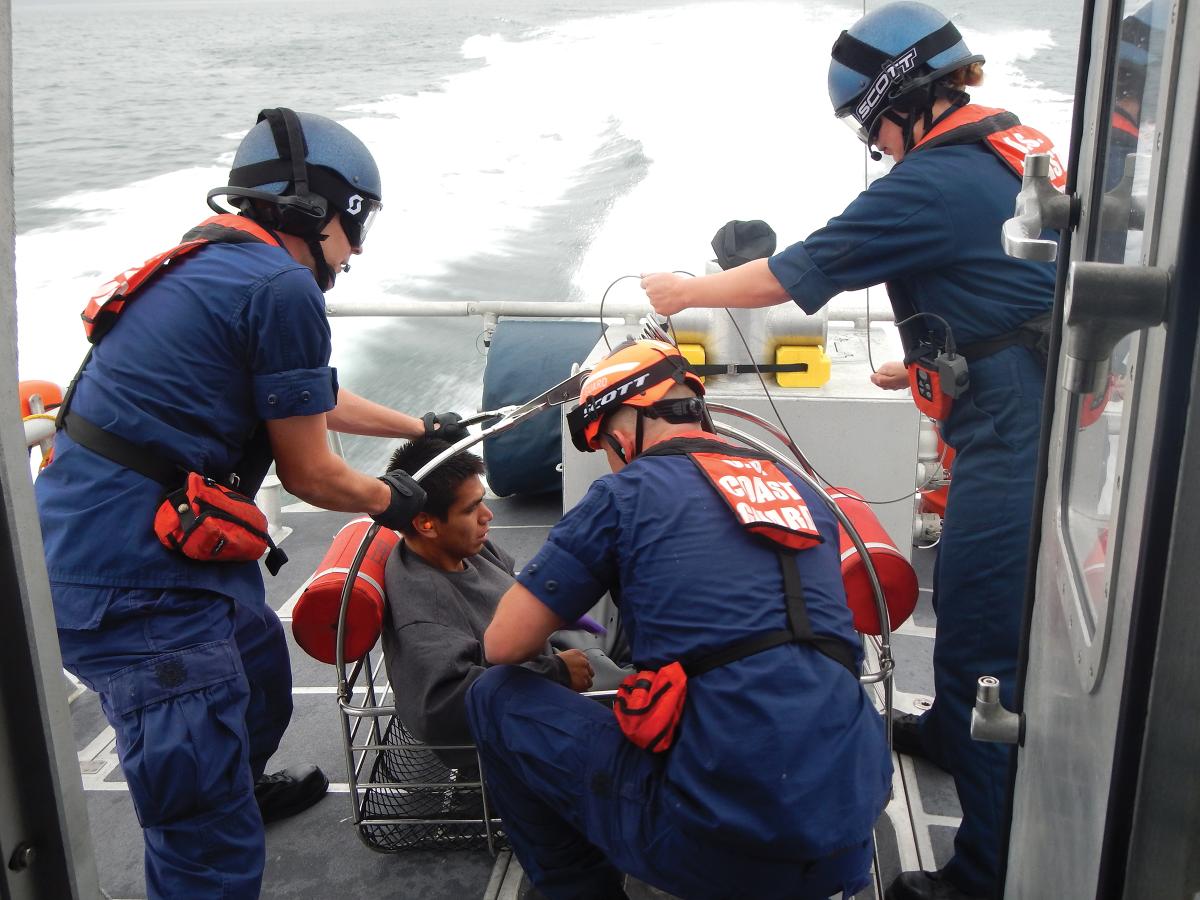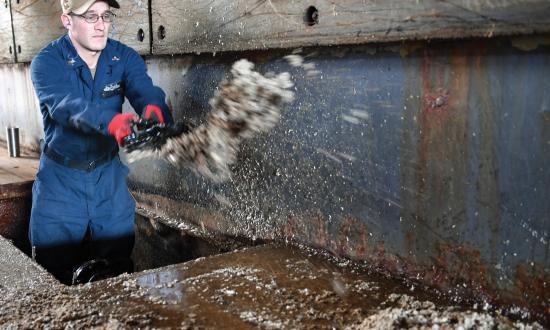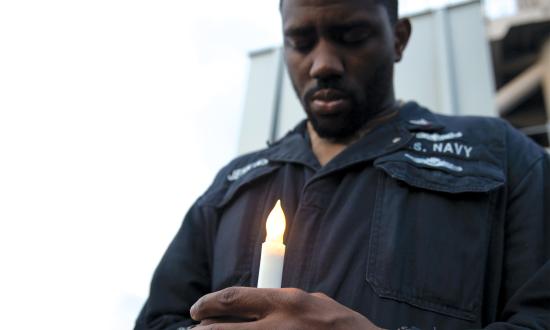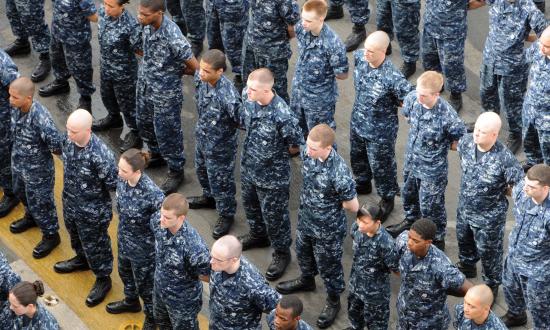Tragedy yields change. The U.S. Coast Guard has repeatedly experienced this reality over the life of the service, where the names of lost vessels often correspond to policy. A recent tragedy that began when the fishing vessel Orin C suffered an engine failure and took on water in rough seas off the Massachusetts coast, however, has not produced the change it demands, despite being the subject of intense media coverage, a service-led investigation, and a National Transportation Safety Board (NTSB) investigation.
While under tow by a responding 47-foot motor lifeboat, the Orin C sank, and all three on board entered the water. Two swam to the lifeboat, but the captain was sighted floating face down. Though he was quickly recovered and CPR was performed on him for more than an hour, attempts to deliver an EMT and an automated external defibrillator (AED) from a helicopter were unsuccessful, and the captain perished.1
Courts have repeatedly held that the Coast Guard has no duty to rescue or provide aid to someone the service itself did not imperil. If the service does imperil someone or respond, its personnel must act reasonably by exercising due care. In this instance, the crew of the lifeboat were unable to save a life, but by all accounts exercised due care within the limits of their capability. Those who spend any time in this line of work quickly learn that people are going to die—not every tragedy can be averted, as life is fragile and finite. The focus here is on the way ahead and how this death can lead to positive change to prevent future losses.
The NTSB made only two recommendations to the Coast Guard in its report, both related to the medical care its crews provide to those rescued from the water. First: “At all times, at least one crewmember on board each type of response boat is adequately trained in the types of medical emergencies expected in a marine environment and qualified in the use of all first-aid and/or trauma equipment carried on board.” Second: “Develop a standard for the contents of first-aid and trauma kits for each type of Coast Guard response vessel.”2 The gravity of these recommendations was not lost on the media, and reports on the incident were paired with headlines such as, “U.S. Coast Guard’s Medical Training Questioned” and “Rescue Gone Wrong.”3
To address the NTSB recommendations, the Coast Guard established an EMS Requirements Working Group at headquarters and tasked it with identifying and resolving medical capability gaps across all service mission areas. Prior to the group’s convening, the service’s director of Health Safety & Work Life (HSWL) released guidance prohibiting the carriage of AEDs, and the Office of Boat Forces (CG-731) charged ahead with an effort to identify a standard first aid kit.4 At face value these initiatives may seem corrective, but their effects are concerning.
Nearly all Coast Guard search and rescue is carried out by boat crews.5 By including personnel assigned to command centers and pollution response teams in its scope, the EMS working group greatly expanded the perceived need for medically trained personnel. The effect of this decision was to increase the cost for implementing any course of action, to the detriment of those called on to provide aid to victims at sea. This is a critical distinction, as the boat-forces community, despite its importance, does not have many high-ranking veterans. Boat units are commanded by enlisted officers in charge (OIC), or mustangs, and few reach the rank of captain prior to retirement, meaning there is no cadre of admirals with coxswain insignias concerned with the legacy of a mission to which they have dedicated their lives. Increasing the scope of the working group, though likely well-intentioned, negatively affects the community the NTSB has identified as needing improvement.
The inclusion of HSWL in the working group also marks a stark deviation from a long-standing separation of powers among headquarters program offices. For all of recent memory and per its own mission statement, HSWL has focused on the management of Coast Guard clinics and the medical records of service personnel, barely touching on the policy or doctrine concerning first aid at sea.6 Though the Emergency Medical Services Manual does originate with the office’s predecessor, it is spartan in content and simply authorizes personnel to provide care up to the level of their individual training, with no requirement for oversight by a physician beyond advanced life support.
First aid policy for boat crews has instead been the responsibility of CG-731, which provides some mandates. For initial certification, all Coast Guardsmen are required to be trained in first aid and CPR by an approved source. After this, the only requirement is to attend an annual refresher, which in most cases is a facilitator reading from a boat crew handbook, aptly titled First Aid.7 Except for a lone protocol for hypothermia, the handbook references no medical protocols with which it aligns, and instead is a collection of institutional knowledge carried over from early editions of the service’s Boat Crew Seamanship Manual. This from a service that published National Standards for the Resuscitation of the Apparently Drowned in 1922.8 Without physician oversight or statutory- or policy-driven motivation to update the handbook, much of it is dated and fails to reflect modern first aid methods.9
Maintaining the requirement for formal training only for initial certification is counter to professionalization. That the approved courses and materials are intended for audiences who call 911 for an ambulance is a fact not lost on boat crews who operate in remote and austere environments. The public rightfully expects them to provide victims with necessary aid to sustain life until the patient can be delivered to higher care.
If the Coast Guard remains committed to a commercial-off-the-shelf solution to lifesaving, a course based on delivering aid where higher-level care is not readily available would better serve Coast Guardsmen and those they rescue. An obvious choice would be a course approved by the service’s National Maritime Center that meets the Coast Guard Standards of Training, Certification, and Watchkeeping for medical first aid and care required for certain commercial mariners.
Like all boats of its type, the lifeboat responding to the Orin C carried a first aid and trauma kit. Training and doctrine available to lifeboat crews do not address many treatment options available in the kit. The NTSB report noted that “none of the crew on board had the training to use much of the equipment.”10 Logic dictates that before a standard kit is procured, crew training should be standardized so they are familiar with how to use equipment they have access to. However, a continuation of disparate first aid courses does not allow standardization and provides no basis for what supplies the kits should hold.
HSWL’s prohibition on AED usage is a reversal of guidance issued nearly two decades ago, when the service first authorized anyone formally trained to use the devices. A second update reaffirmed the initial guidance in part but left the decision of carriage to individual units rather than establishing a mandate.11 These developments led several senior leaders to adopt the frightening posture that Coast Guard personnel “are not first responders”—a statement that could not be further from reality. Such actions have consequences and, in this case, threaten the culture of what is and always has been a lifesaving service.
Inclusion in the EMS Requirements Working Group provided HSWL and other headquarter offices an opportunity to lead and professionalize doctrine, training, protocols, and equipment, but all instead opted to maintain the status quo and even lessen capability. There has not even been a move to adopt existing medical protocols of the Department of Homeland Security (DHS), to which the Coast Guard belongs, that cover the range of injuries and illnesses in an easily referenced guide signed by the DHS chief medical officer.12 Though the guide extends to paramedic levels of care, it would be quick work to break DHS protocols into tiers, with sections outlining actions to be taken by first responders.
No legal or statutory requirements exist that mandate a certain level of EMS capability for the Coast Guard. Everything the service does in this regard is driven by its own policies and by third-party and public outcry in the wake of a tragedy. The Coast Guard recently drafted a summary of its desired EMS capability as the retrieval, stabilization or sustainment, and delivery of injured persons to higher level care. It is a succinct goal and one that would benefit from being restated in federal legislation to prevent internal stakeholders from writing policies that limit capability, treat the task as an afterthought, or interpret it to benefit those who do not get physically involved in rescues.
These are the realities, and they are diminishing the Coast Guard’s value to the public. Until action is taken, service leaders should revisit the NTSB report and seize the opportunity to save lives at sea.
1. “Marine Accident Brief: Sinking of Commercial Fishing Vessel Orin C,” National Transportation Safety Board, 15 February 2018.
2. “Marine Accident Brief: Sinking of Commercial Fishing Vessel Orin C.”
3. “U.S. Coast Guard’s Medical Training Questioned,” The Maritime Executive, 28 February 2018; G. Jeffrey MacDonald, “Rescue Gone Wrong,” Boston Globe,
1 January 2016.
4. Commandant of the Coast Guard ADM James M. Loy, “ALCOAST 484/00: Automated External Defibrillator (AED) Use in the Coast Guard,” 19 December 2000.
5. PA1 David A. Schuhlein, USCG, “OSMS and You: Boat Forces Operations,” Coast Guard All Hands,
1 April 2015.
6. U.S. Coast Guard, “Health, Safety & Work-Life (CG-11).”
7. U.S. Department of Homeland Security, U.S. Coast Guard, U.S. Coast Guard Boat Operations and Training (BOAT) Manual, vol. II (February 2020), 2–85.
8. U.S. Coast Guard, “Annual Report of the United States Coast Guard” (1922).
9. J. Brian Rush, Chief, Office of Boat Forces, USCG, U.S. Coast Guard Boat Crew Handbook–First Aid, BCH16114.5 (December 2017).
10. “Marine Accident Brief: Sinking of Commercial Fishing Vessel Orin C.”
11. Commandant of the Coast Guard, “ACN 121/18: Automated External Defibrillator (AED) Use in the Coast Guard—Update,” 8 November 2018.
12. “DHS-Wide Basic Life Support & Advanced Life Support Protocols,” Department of Homeland Security.






